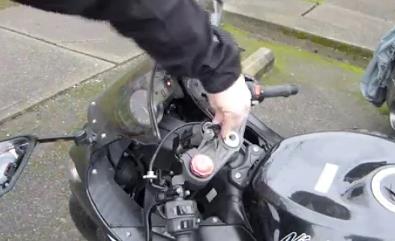Which Side Of The Road Do You Bike On US? Answered
Navigating the roads on a bicycle in the United States requires understanding specific rules to ensure safety and compliance with traffic laws. The question Which Side Of The Road Do You Bike On US? is fundamental for every cyclist, from beginners to experienced riders, to avoid accidents and ride effectively within the traffic system.
Key Takeaways
- Cyclists must ride on the right side of the road, in the same direction as other vehicles.
- Biking against traffic is prohibited and increases the risk of accidents.
- Special bike lanes and rules exist in many cities to enhance cyclists’ safety.
Which Side Of The Road Do You Bike On US?
In the United States, cyclists are required to bike on the right side of the road, following the same direction as motor traffic. This standard is in line with the country’s right-hand traffic system, designed to maintain a uniform flow of traffic and enhance safety for all road users.

Biking on the Right Side: Safety and Law
Biking on the right side of the road is not only a recommendation; it’s a legal requirement in most US states. This rule helps cyclists become more predictable to motorists, reducing the likelihood of collisions. Riding on the right also allows cyclists to take advantage of bike lanes where available, which are specifically designed for their safety and to facilitate smoother traffic flow.
Legal Foundations
In the US, traffic laws stipulate that bicycles on the roadway are vehicles and must follow the same rules as motor vehicles. This includes riding on the right side of the road. These laws are enforced to ensure everyone’s safety and to maintain order on the roads.
Safety Benefits
Riding on the right significantly reduces the risk of head-on collisions with oncoming traffic. It also improves visibility for both cyclists and drivers, making it easier to make safe maneuvers and communicate intentions through hand signals or eye contact.
Understanding Bike Lanes
Bike lanes are designated areas on the road specifically for bicycle traffic. They are marked by distinct pavement coloring or symbols and are designed to provide a safe space for cyclists, away from the flow of motor vehicles.
Types of Bike Lanes
There are several types of bike lanes, including conventional bike lanes on the right side of the road, contraflow lanes that allow biking against the general traffic flow in one-way streets, and protected bike lanes that offer physical barriers between cyclists and vehicles.
Using bike lanes correctly involves understanding their types, knowing when to enter or exit them, and being aware of intersections and right-of-way rules. Cyclists should always signal their intentions and be vigilant of parked cars and pedestrians.
Right vs. Left: A Comparative Analysis
While the rule in the US is to bike on the right, it’s interesting to compare this with countries where cyclists ride on the left. This section explores the rationale behind different practices and their impact on safety and traffic flow.
The Rule in Other Countries
In some countries, like the UK and Australia, the norm is for cyclists to ride on the left side of the road, aligning with their drive-on-the-left rule for motor vehicles. This variance underscores the importance of local laws and customs in determining safe cycling practices.
Impact on Cyclists’ Safety
Research suggests that consistency with the prevailing traffic flow, whether on the right or left, is crucial for minimizing accidents. It reduces conflicts at intersections and driveways and makes cyclists more visible to drivers.
Do You Cycle On The Left Side Of The Road?
In the United States, cyclists are required to cycle on the right side of the road, following the same direction as motor traffic. This is aligned with the general traffic rule where all vehicles, including bicycles, adhere to right-hand traffic protocols.

Cycling on the left side of the road is practiced in countries where left-hand traffic is the norm, such as the UK, Australia, and Japan. In these countries, the rule is reversed, and cyclists are expected to keep to the left. The fundamental reason for this standard is to maintain uniform traffic flow and enhance safety by minimizing conflicts between cyclists and motor vehicles.
Cycling on the opposite side of the road can lead to dangerous situations, including head-on collisions, especially at intersections and junctions where drivers may not anticipate encountering a cyclist coming from the wrong direction.
Why Do You Bike On The Right Side Of The Road?
Biking on the right side of the road in the United States is a matter of law and safety. This practice aligns with the country’s right-hand traffic system, ensuring that all road users follow a consistent pattern, thereby reducing the risk of accidents.

Cycling on the right side makes cyclists more visible to drivers who are also using the right side of the road, especially when overtaking or turning. It ensures smoother flow of traffic and easier communication among road users, as cyclists can make eye contact with drivers and use hand signals effectively.
Moreover, most bike lanes and cycling infrastructure are designed with right-side travel in mind, providing safer routes for cyclists. The right side rule also simplifies navigation and decision-making for cyclists at intersections and junctions, where adhering to the same rules as motor vehicles helps prevent confusion and collisions.
Is The Drive Side Of A Bike Left Or Right?
The drive side of a bike, referring to the side where the chain and gears are located, is on the right. This standard design feature applies universally to bicycles worldwide, regardless of the country’s driving norms.
Having the drive side on the right is a convention that stems from the mechanical design of bicycles, facilitating easier mounting and dismounting for riders, as most people are right-handed and find it more convenient to handle the bike from the side not obstructed by the chain and gears.
Additionally, placing the drivetrain on the right side helps keep the cyclist’s clothes cleaner, as they are less likely to come into contact with the chain when mounting or dismounting the bike from the left side. This design also standardizes the manufacturing process for bicycles, allowing for a consistent approach to bike assembly and maintenance across the globe.
Conclusion
Cycling on the right side of the road in the US is a legal requirement that aligns with traffic flow and maximizes safety for cyclists and motorists alike.
Understanding and adhering to this rule, along with the correct use of bike lanes and awareness of local traffic laws, are crucial steps for any cyclist aiming to navigate the roads safely and confidently.
This practice not only protects cyclists but also ensures a harmonious sharing of the road with other vehicles, contributing to a safer and more efficient transportation environment for everyone.
Top FAQ’s
What is the recommended safety gear for cyclists?
In addition to helmets, cyclists are encouraged to wear bright or reflective clothing for visibility, gloves for grip and protection, and appropriate eyewear to protect from the sun and debris. Lights and reflectors are essential for night riding. Safety gear plays a crucial role in preventing injuries and making cyclists more visible on the road.
Are electric bikes allowed in bike lanes?
Electric bikes (e-bikes) are allowed in bike lanes in many US states, but there are restrictions based on the type of e-bike and local laws. Generally, e-bikes with a maximum speed of 20 mph are treated similarly to traditional bicycles, while faster e-bikes may have more restrictions. Always check local regulations regarding e-bike use in bike lanes.
How do night riding rules differ for cyclists?
Cycling at night requires additional precautions for visibility. In most US states, bicycles must be equipped with a front white light visible from at least 500 feet away and a rear red reflector or light visible from up to 600 feet away. Wearing reflective clothing or accessories also enhances visibility to motorists.
Can cyclists be fined for breaking traffic laws?
Yes, cyclists can be fined for violating traffic laws, similar to motor vehicle drivers. This includes running stop signs or red lights, riding on the wrong side of the road, or not using proper lights at night. Abiding by traffic laws helps prevent accidents and ensures a safer environment for cyclists and motorists alike.

Welcome to the exhilarating world of Matt Rex, a professional car racer turned renowned vehicle enthusiast. Immerse yourself in his captivating blog as he shares heart-pounding adventures, expert reviews, and valuable insights on cars, trucks, jets, and more. Fuel your passion for speed and discover the beauty of vehicles through Matt’s engaging stories and meticulous expertise. Join the ever-growing community of enthusiasts who find inspiration and expert advice in Matt Rex’s blog—a digital hub where the thrill of speed meets the pursuit of knowledge.







